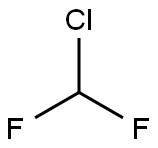Chloro(triphenylphosphine)gold
Synonym(s):(Ph3P)AuCl;Triphenylphosphinegold(I) chloride
- CAS NO.:14243-64-2
- Empirical Formula: C18H15AuClP
- Molecular Weight: 494.71
- MDL number: MFCD00009588
- EINECS: 238-117-6
- SAFETY DATA SHEET (SDS)
- Update Date: 2023-04-23 13:52:06

What is Chloro(triphenylphosphine)gold?
Chemical properties
White crystalline powder
The Uses of Chloro(triphenylphosphine)gold
Chloro(triphenylphosphine)gold(I) is a common reagent in gold chemistry. It catalyzes certain rearrangement reactions in organic synthesis. It is also used to prepare 1-methylthyminato-N3-triphenylphosphinegold(I) by reacting with 1-methylthymine. It acts as a precursor for the synthesis of gold(I) and gold(III) organometallic compounds.
The Uses of Chloro(triphenylphosphine)gold
Catalyst employed in the cyclization of O-propargyl carbamates to alkylideneoxazolidinones via a 5-exo-digonal pathway at room temperature. Also catalyzes the cycloisomerization of enynes containing a cyclic olefin into highly-fused, polycyclic dienes at room temperature.
What are the applications of Application
Chloro(triphenylphosphine)gold(I) is a catalyst employed in the cyclization of O-propargyl carbamates to alkylideneoxazolidinones
Properties of Chloro(triphenylphosphine)gold
| Melting point: | 248-249°C |
| storage temp. | Keep in dark place,Inert atmosphere,2-8°C |
| form | Crystalline Powder |
| color | White |
| Water Solubility | Soluble in methylene chloride, acetonitrile, benzene and acetone. Insoluble in water and ethanol. |
| CAS DataBase Reference | 14243-64-2(CAS DataBase Reference) |
Safety information for Chloro(triphenylphosphine)gold
| Signal word | Warning |
| Pictogram(s) |
 Exclamation Mark Irritant GHS07 |
| GHS Hazard Statements |
H315:Skin corrosion/irritation H319:Serious eye damage/eye irritation H335:Specific target organ toxicity, single exposure;Respiratory tract irritation |
| Precautionary Statement Codes |
P261:Avoid breathing dust/fume/gas/mist/vapours/spray. P264:Wash hands thoroughly after handling. P264:Wash skin thouroughly after handling. P271:Use only outdoors or in a well-ventilated area. P280:Wear protective gloves/protective clothing/eye protection/face protection. P302+P352:IF ON SKIN: wash with plenty of soap and water. P305+P351+P338:IF IN EYES: Rinse cautiously with water for several minutes. Remove contact lenses, if present and easy to do. Continuerinsing. |
Computed Descriptors for Chloro(triphenylphosphine)gold
Chloro(triphenylphosphine)gold manufacturer
Johnson Matthey Chemicals India Pvt Ltd
New Products
(S)-3-Aminobutanenitrile hydrochloride 4-Methylphenylacetic acid N-Boc-D-alaninol N-BOC-D/L-ALANINOL Tert-butyl bis(2-chloroethyl)carbamate 3-Morpholino-1-(4-nitrophenyl)-5,6-dihydropyridin- 2(1H)-one Furan-2,5-Dicarboxylic Acid Tropic acid 1-Bromo-3,5-Di-Tert-Butylbenzene S-2-CHLORO PROPIONIC ACID ETHYL ISOCYANOACETATE 2-Bromo-1,3-Bis(Dimethylamino)Trimethinium Hexafluorophosphate 4-IODO BENZOIC ACID 3-NITRO-2-METHYL ANILINE 1-(2,4-DICHLOROPHENYL) ETHANAMINE (2-Hydroxyphenyl)acetonitrile 4-Bromopyrazole 2-(Cyanocyclohexyl)acetic acid 4-methoxy-3,5-dinitropyridine 1-(4-(aminomethyl)benzyl)urea hydrochloride 2-aminopropyl benzoate hydrochloride diethyl 2-(2-((tertbutoxycarbonyl)amino) ethyl)malonate tert-butyl 4- (ureidomethyl)benzylcarbamate Ethyl-2-chloro((4-methoxyphenyl)hydrazono)acetateRelated products of tetrahydrofuran








You may like
-
 14243-64-2 Chloro(triphenylphosphine)gold(I) 98%View Details
14243-64-2 Chloro(triphenylphosphine)gold(I) 98%View Details
14243-64-2 -
 Chloro(triphenylphosphine)gold(I) CAS 14243-64-2View Details
Chloro(triphenylphosphine)gold(I) CAS 14243-64-2View Details
14243-64-2 -
 Chloro(triphenylphosphine)gold(I) CAS 14243-64-2View Details
Chloro(triphenylphosphine)gold(I) CAS 14243-64-2View Details
14243-64-2 -
 Chloro(triphenylphosphine)gold(I) CAS 14243-64-2View Details
Chloro(triphenylphosphine)gold(I) CAS 14243-64-2View Details
14243-64-2 -
 Triphenylphosphinegold(I) Chloride ((Ph3P)AuCl) CAS 14243-64-2View Details
Triphenylphosphinegold(I) Chloride ((Ph3P)AuCl) CAS 14243-64-2View Details
14243-64-2 -
 Chloro(triphenylphosphine)gold(i) 95% CAS 14243-64-2View Details
Chloro(triphenylphosphine)gold(i) 95% CAS 14243-64-2View Details
14243-64-2 -
 (Triphenylphosphine)gold(I) Chloride CAS 14243-64-2View Details
(Triphenylphosphine)gold(I) Chloride CAS 14243-64-2View Details
14243-64-2 -
 Chloro(triphenylphosphine)gold(I) CAS 14243-64-2View Details
Chloro(triphenylphosphine)gold(I) CAS 14243-64-2View Details
14243-64-2